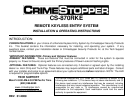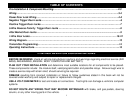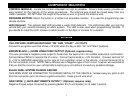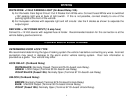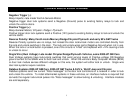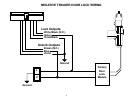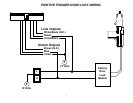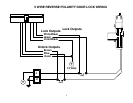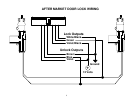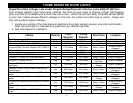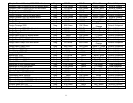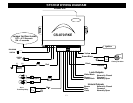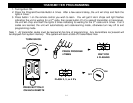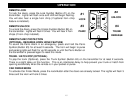
5
POWER DOOR LOCK WIRING:
Negative Trigger (-):
Many Imports; Late model Ford & General Motors
Negative trigger door lock systems send a Negative (Ground) pulse to existing factory relays to lock and
unlock the vehicle doors.
Positive Trigger (+):
Many General Motors; Chrysler / Dodge / Plymouth
Positive trigger door lock systems send a Positive (12V) pulse to existing factory relays to lock and unlock the
vehicle doors.
Reverse Polarity: Many Ford/Lincoln/Mercury/Dodge/Chrysler/Plymouth and early 90’s GM Trucks
Reverse Polarity systems use no relays, but instead the door lock/unlock motors are controlled directly from
the lock and unlock switches in the door. The lock and unlock wires rest at Negative Ground when not in use.
When the lock or unlock button is pressed, one of the circuits is “Lifted” and replaced with +12V causing a lock
or unlock to occur.
Single Wire (Dual Voltage): Late model Chrysler/Dodge/Plymouth Vehicles, some 2000-UP GM Cars
Dual Voltage systems have lock/unlock switches that send varying levels of Positive voltage OR Negative
ground current to the SAME wire for both lock and unlock. When the vehicle’s Body Computer Module (BCM)
or door lock module senses different voltages on this wire, the system will either lock or unlock. Single wire
door lock systems require resistors.
Databus Systems 2000-UP GM Cars, 2003-UP GM Trucks & SUV’s, ’96-UP Jeep and Chrysler
Databus systems send low current “Data messages” to the door lock controllers on a network in order to lock
and unlock the vehicle. To install aftermarket systems in these vehicles, an interface module is required that
converts the regular lock/unlock pulses into “Data messages” to allow locking & unlocking. Interface modules
are sold separately.



